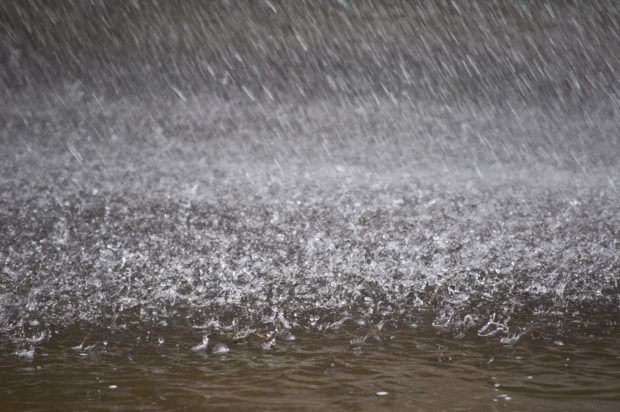Another round of rain is on the way for the water-logged Mississippi Valley, after a weekend storm that damaged wheat crops across the upper U.S. Great Plains.
The bulk of the rain will be concentrated from eastern Oklahoma and Kansas stretching east to Indiana, with Missouri and Illinois getting the worst of it, said David Roth, a forecaster at the U.S. Weather Prediction Center in College Park, Maryland. The two Midwestern states could get more than 3.5 inches (8.8 centimeters) of rain in the next three days.
“The biggest potential for problems is parts of central and southern Missouri where we have moderate risk for Wednesday and Wednesday night,” Roth said. “They have lots of areas where flooding is occurring or imminent.”
Over the weekend, another system brought snow and high winds that damaged ripening wheat plants across Kansas, Colorado, Oklahoma and Nebraska, pushing grain prices higher. Early estimates suggest crop losses could exceed 50 million bushels, according to Pira Energy.
That system also brought heavy rain and many areas that were soaked will get hit again. The one bright spot is there’s no more snow in the forecast.
Wheat prices posted record gains in Chicago on Monday as the U.S. winter crop faced substantial losses after the weekend storm. For hard red winter wheat, a variety of the grain used for bread, futures for July delivery surged 6.5 percent to $4.6575 a bushel, the biggest-ever increase for the contract. July futures for soft red winter wheat, which is used to make cookies and cake, jumped 5.5 percent, also a record, while corn prices also climbed.
The excess moisture also means some corn and soybean fields will probably have to be replanted, and low temperatures and soggy fields will blunt seeding progress. More than 80 percent of the Midwest got more than 1 inch (2.5 centimeters) of rain and 40 percent saw more than 3 inches, according to David Streit, the senior lead forecaster at Bethesda, Maryland-based Commodity Weather Group LLC.
Flood warnings now stretch from Oklahoma to Indiana, and many rivers will swell from their banks. Across the region, 23 river gauges are showing major flooding and 55 moderate conditions.
Flood waters on the Mississippi could take until the end of the month to reach its mouth in Louisiana, but it won’t be enough to push the Army Corps of Engineers into a major action, said Jeff Graschel, service coordination hydrologist with the Lower Mississippi River Forecast Center in Slidell, Louisiana. In 2011, a massive flood along the lower Mississippi required opening spillways in Louisiana, choked off barge traffic in the main channel and inundated thousands of acres of adjacent farmland.
Houston Floods
Smaller rivers across the region, such as the Black, White and St. Francis rivers in Missouri and Arkansas, could still force evacuations and swamp cropland, he said by telephone.
“It is certainly significant from an agricultural standpoint, it will have significant impacts,” Graschel said. “But it’s not unheard of for this time of year.”
The Mississippi at Cape Girardeau, Missouri, will crest just under record levels, while the river will reach major flood stage at East St. Louis, the weather service said. Across Missouri, the Moreau River will also flirt with a record flood, while the Meramec and Gasconade will set new all-time highs.
In addition to the rains across the Midwest, an area from Houston to Mobile, Alabama could also receive 2 or more inches. In recent years, Houston has been prone to spring floods.





















 Executives on the Move at Liberty Mutual, Cowbell, W. R. Berkley
Executives on the Move at Liberty Mutual, Cowbell, W. R. Berkley  California Workers Comp Combined Ratio for 2024 Highest in 20-Plus Years
California Workers Comp Combined Ratio for 2024 Highest in 20-Plus Years  Why the Middle Market Matters and How Insurers Can Capture It
Why the Middle Market Matters and How Insurers Can Capture It  Five AI Trends Reshaping Insurance in 2026
Five AI Trends Reshaping Insurance in 2026 







